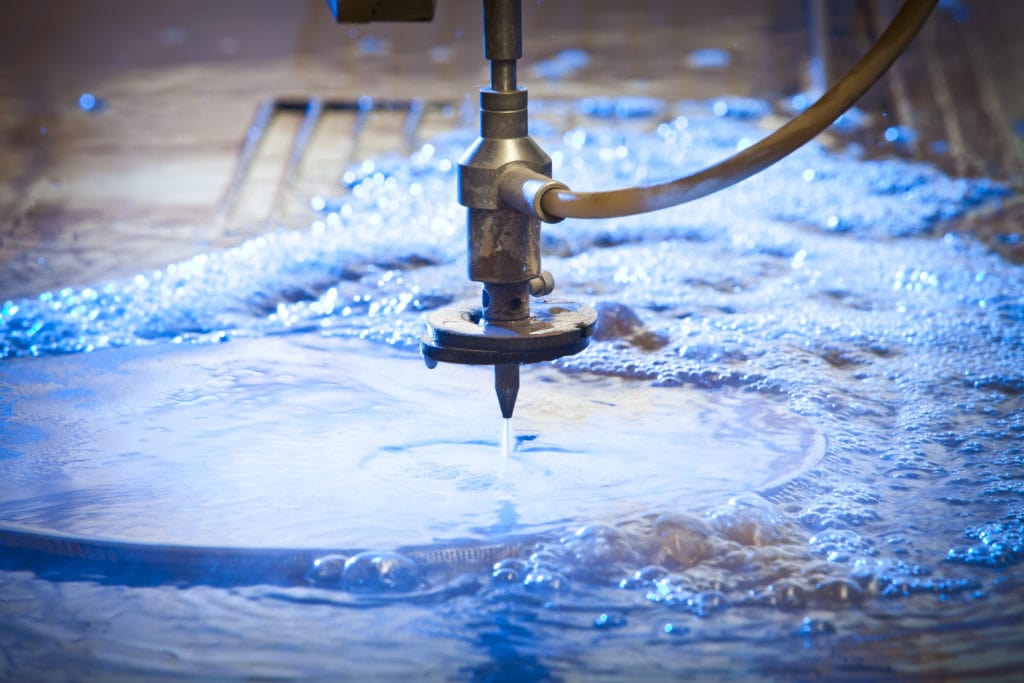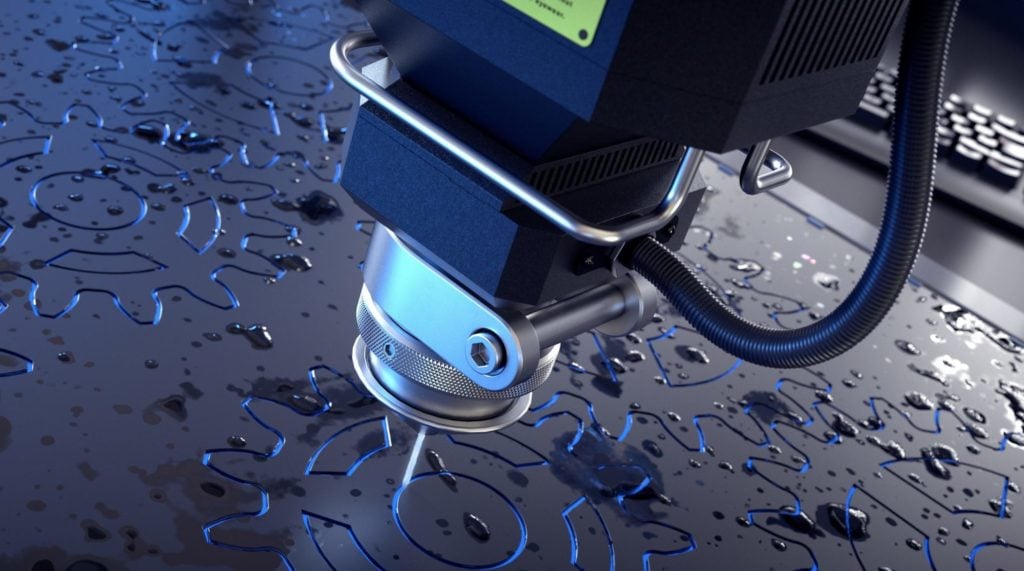3 Reasons Why Water Jet Cutting Is the Right Choice for Your Next Metal Fabrication Project
Leave a CommentWater jet cutting is a fabrication process that relies on the principles of erosion. It involves pressurizing water—sometimes mixed with abrasive media (e.g., garnet)—to up to 392 MPa and projecting it from a small-bore nozzle. 
Compared to other cutting methods, water jet cutting offers numerous advantages. That’s why it is used for many manufacturing projects. Below, we highlight three of the top reasons why you should consider using the water jet cutting process in your next metal fabrication project.
1. It accommodates many materials.
The water jet cutting process is suitable for cutting virtually any material. It is most commonly used in metal fabrication operations to cut metals such as:
- Aluminum
- Brass
- Nickel
- Steel
- Titanium
2. It cuts without heat.
Unlike most other cutting methods, water jet cutting is considered a cold cutting process. Since only the water jet touches the workpiece during cutting operations, little to no heat is generated. As a result, there is no risk of thermal damage, such as warping or discoloration. This quality makes the process suitable for processing heat-sensitive materials and making components that cannot have thermal distortion. Additionally, it eliminates the need for secondary finishing operations to resolve any thermal damage on the component, which helps reduce production costs.
3. It can create complex shapes.
The water jet cutting process has the ability to cut basic to highly complex shapes. It can cut, drill, and slice a wide 
The equipment used in water jet cutting—i.e., water jet cutters—can be operated manually by human workers or automatically by computer software. The latter option is generally used for components that require a high degree of accuracy and precision.
Water Jet Cutting Services from South Shore Manufacturing
Water jet cutting is a highly versatile process. It can be used to cut basic or complex shapes into nearly any material to tight tolerances. For these reasons, among others, it finds application in the manufacturing projects of many industries, including aerospace, construction, food & beverage, medical, military, and more.
Looking for a partner for your next water jet cutting project? The experts at South Shore Manufacturing have got you covered. Throughout our decades in business, we’ve perfected our water jet cutting processes to ensure we can deliver on-time, cost-effective solutions to meet the cutting needs of any industry or application. Our team has the knowledge, skills, and equipment to create quality components from a broad selection of metal, plastic, and composite materials.
Our water jet cutting capabilities include:
- Min to max thickness: 0.010 to 6.0 in.
- Max cutting length: 12.0 ft
- Max cutting width: 6.0 ft
- Tolerance: ±0.005 in.
- Kerf width:.015 to .030 in.
- Production volume: prototype, low volume, high volume, blanket orders
For more information on our water jet cutting capabilities, visit our New England water jet cutting services page or contact us today. To discuss your project details with one of our representatives, request a quote.

